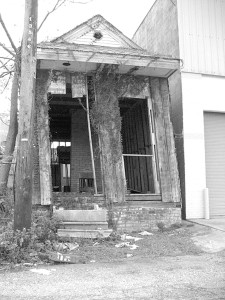Black homeowners, buyers hit hard in the recent recession
6th July 2015 · 0 Comments
By Susan Buchanan
Contributing Writer
Locally and nationally, African- American homeowners were particularly vulnerable to predatory financing during the nation’s economic downturn from 2007 to 2009, a span that’s often called the Great Recession. Shark-like lending at high interest rates then will have consequences for Black families, their savings and the lives of their children, according to a study released in June by the Social Science Research Council in New York and commissioned by the American Civil Liberties Union.
The report, “Impact of the U.S. Housing Crisis on the Racial Wealth Gap Across Generations,” describes two different paths for families who owned homes in the recession. While incomes of white homeowners have started to rebound, Black households are struggling to recover lost ground. The report’s authors, Sarah Burd-Sharps and Rebecca Rasch fear that the current wealth disparity will grow over time.
Among the study’s sample of Americans who owned residences at some point between 1999 and 2011, home equity represented a greater part of total wealth for Blacks than whites. “A typical Black household subject to a toxic mortgage had fewer resources to fall back on when home values plummeted and interest rates skyrocketed,” the authors said. Losses in wealth held by Black homeowners are likely to reverberate and affect the group’s next generation of households.
Locally, the Greater New Orleans Fair Housing Action Center keeps tabs on mortgage lending. “A disproportionate rate of denial of home loans to African Americans in New Orleans drives them to the predatory market,” GNOFHAC’s executive director Cashauna Hill said last week “Even when controlling for factors such as income, African Americans are often denied financing at a three-to-one rate compared with their white counterparts.”
For middle-income families in New Orleans, those in areas with large minority populations were almost twice as likely to be denied home loans as mid-income families in white neighborhoods, according to an internal GNOFHAC study done several years ago for city officials.
Between 2008 and 2010, African Americans in the Crescent City held more high-yearly-percentage-rate home loans than whites, GNOFHAC’s study found. Blacks built equity in their homes more slowly than whites as they paid off interest rather than principal. And they were at greater risk for foreclosures as they tried to make payments.
Last week, GNOFHAC policy director Monika Gerhart discussed New Orleans during and after the 2007 to 2009 recession. “Predatory lending then, when there was a lack of access to credit in conventional markets and loan denials to African Americans, contributed heavily to recent foreclosures in communities of color,” she said. Moreover, “banks didn’t maintain and market foreclosures—also known as real-estate owned or REO properties — in African-American neighborhoods as well as they did in white areas,” she said.
“In our investigations, we found that Fannie Mae properties in communities of color had broken doors and windows; unlocked doors and windows—allowing access to homes; excessive litter; dead or overgrown lawns; dead or live animals on the property and other major deficiencies,” Gerhart said. Few Fannie Mae properties in white neighborhoods in New Orleans had those hazards.
Fannie Mae, the Federal National Mortgage Association, was established in 1938 by the government after the Great Depression to add liquidity to the housing market. It has done that by buying mortgages from banks and then selling them. The enterprise has been privately held and publicly traded since 1968.
In recent years, GNOFHAC has filed a number of complaints against lenders, including Fannie Mae, for failing to maintain REOs in the city’s Black neighborhoods and contributing to declining property values there, Gerhart said.
At Southeast Louisiana Legal Services (SLLS) in downtown New Orleans, executive director Laura Tuggle said to combat predator financing in the region, SLLS has provided attorneys for mortgage counseling and foreclosure prevention since 2007. SLLS advises buyers looking for home loans to shop around and apply to three different institutions—including banks, credit unions, and savings and loans—rather than jumping at the first offer.
In Washington, housing has been on the Supreme Court’s radar screen recently. In a 5-to-4 decision on June 25, the court ruled that policies segregating minorities in poor neighborhoods violate the nation’s Fair Housing Act.
Authors of the Social Science Research Council report said officials need to stamp out racial disparities in mortgage servicing. The secondary mortgage market should be reformed to spur inclusive lending, without discrimination. And access to credit, which has become tougher for minorities to get since the recent recession, must be expanded. To read the SSRC report, visit the web at www.ssrc.org/publications/view/impact-of-the-us-housing-crisis-on-the-racial-wealth-gap-across-generations.
This article originally published in the July 6, 2015 print edition of The Louisiana Weekly newspaper.




